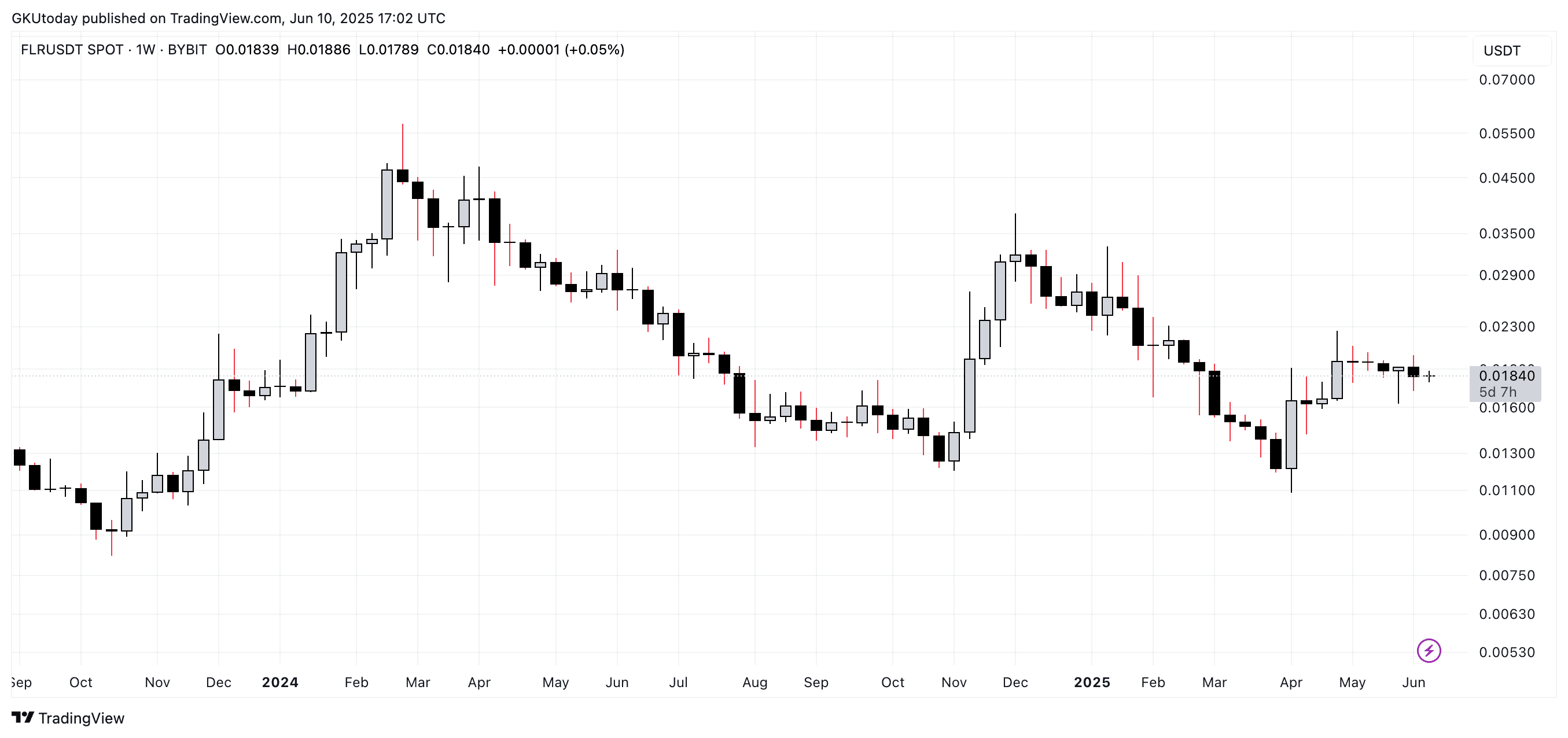
Flare (FLR) has emerged in 2025 as a rising Layer-1 smart contract platform focused on interoperability and decentralized data. Unlike most chains that rely on third-party oracles or off-chain bridges, Flare was designed from the ground up to natively bring secure off-chain and cross-chain data directly into smart contracts. With its two native protocols — the Flare Time Series Oracle (FTSO) and the State Connector — Flare is not just another Ethereum clone; it’s a blockchain built to unlock real-world utility through secure external data.
Now three years past its token launch and mainnet activation, Flare has grown into a unique infrastructure layer serving developers, DeFi protocols, stablecoin issuers, and data-driven dApps that demand trustworthy, verifiable input from multiple blockchains and the outside world.
Flare is an EVM-compatible Layer-1 blockchain that stands out for its focus on native data access and trust-minimized interoperability. It combines smart contract capabilities with built-in oracle systems — specifically designed to support applications that need real-time data, like prices, identity events, cross-chain messages, or even API responses from traditional web sources.
It has two core innovations:
Flare uses a unique consensus protocol based on the Avalanche consensus model and integrates Federated Byzantine Agreement (FBA) for validator coordination. This ensures low-latency finality, scalability, and high reliability.
Utility of FLR:
The design ensures ecosystem participants (data providers, validators, delegators) are continuously incentivized to keep the network secure, honest, and decentralized.
Flare introduced a system called FAssets to bring non-smart contract assets (like BTC, XRP, and DOGE) into the DeFi world. The FAssets system continues to evolve in 2025, enabling decentralized minting and redemption of tokenized versions of these coins for use in smart contracts.
Tether (USDT) is now natively issued on Flare under the USD₮0 standard, enabling fast, low-fee stablecoin transactions across the network. DeFi protocols are integrating USDT and FAssets to create pools, lending markets, and automated market makers on Flare’s growing suite of dApps.
Flare’s infrastructure is increasingly used by DeFi protocols that demand high-integrity data and trust-minimized interoperability. Yield platforms, synthetic assets, and derivatives markets are tapping into FTSO feeds and the State Connector to automate complex financial logic.
Wrapped assets, LayerZero integrations, and Stargate routing are also enabling Flare to act as a multi-chain hub — allowing funds, messages, or NFTs to flow seamlessly across ecosystems.
Smart contracts on Flare can now respond to real-world conditions: weather events, identity verification, API responses, or on-chain actions on other blockchains. These capabilities have opened up use cases like decentralized insurance, fraud detection, and enterprise data verification without centralized middlemen.
In 2025, Flare’s roadmap focuses on stability, usability, and ecosystem growth rather than protocol overhauls. Key achievements and goals include:

FLR’s price experienced the usual boom-bust volatility after launch, peaking during initial airdrop excitement, then dropping as emissions and sell pressure ramped up. Since late 2024, FLR has found some stability around the $0.01–0.02 range, supported by growing adoption and improved token utility.
Forecasts vary, with some analysts projecting a slow climb back to $0.04–0.06 by late 2025, while others caution that emissions may continue to suppress upward momentum unless ecosystem growth accelerates sharply.
For those looking to get involved with Flare, BaltEX offers one of the best ways to trade and interact with FLR in 2025. BaltEX is a cross-chain, privacy-conscious trading platform that supports fast swaps between FLR and major assets like BTC, ETH, and USDT — all without requiring traditional KYC or custodianship. It’s designed for speed, simplicity, and user sovereignty.
BaltEX supports wrapped and native versions of FLR and gives users full control over their assets with non-custodial wallet support and minimal fees. Whether you're buying FLR for the first time, swapping it into other coins, or exploring cross-chain liquidity, BaltEX makes it seamless.
With a growing reputation as a user-friendly platform for low-fee, cross-chain trading, BaltEX is becoming a preferred venue for FLR holders and DeFi participants alike.
Flare in 2025 is proving itself to be more than just another smart contract platform. By embedding decentralized oracles and cross-chain validation directly into the protocol, it solves real technical problems that other blockchains outsource or ignore. With strong developer tools, EVM compatibility, and native support for trusted external data, Flare is quietly becoming the backbone for a more interconnected blockchain world.
Whether you’re a builder looking for true data access, or an investor watching for under-the-radar infrastructure plays, Flare is one to watch. And if you’re ready to explore or trade FLR, BaltEX gives you one of the easiest, fastest ways to do it — with full control and no friction.
Keywords: Flare 2025, FLR token, Flare price prediction, how to buy FLR, Flare blockchain utility, FTSO oracle, State Connector protocol, cross-chain smart contracts, secure data on blockchain, decentralized oracle network, Flare airdrop 2025, wrapped FLR, staking FLR, yield delegation, low-fee blockchain, fast finality crypto, Web2 data on-chain, real-world data blockchain, interoperable Layer-1, cross-chain crypto data, EVM-compatible blockchain, DeFi on Flare, FAssets protocol, stablecoins on Flare, USDT₮0 Flare integration, Flare vs Ethereum, Flare vs Chainlink, Flare validator rewards, crypto oracle innovation, FLR trading platform, best FLR wallet, trade FLR on BaltEX, swap FLR for BTC ETH XRP, FLR on BaltEX, BaltEX crypto exchange, BaltEX FLR liquidity, privacy-first crypto trading, cross-chain swap platform, crypto trading 2025, decentralized crypto exchange, non-custodial FLR trading, altcoin trading platform, crypto with native oracles, Web3 oracle infrastructure, Flare ecosystem growth, tokenized assets on Flare, crypto for developers, crypto for real-world use, blockchain interoperability 2025, secure decentralized apps, AI-ready blockchain, FLR inflation model, smart contract data feeds, decentralized finance infrastructure, digital identity blockchain, crypto without bridges, verifiable AI blockchain, FLR staking alternative, long-term crypto project, future of crypto trading, high-utility altcoin, scalable smart contract chain.